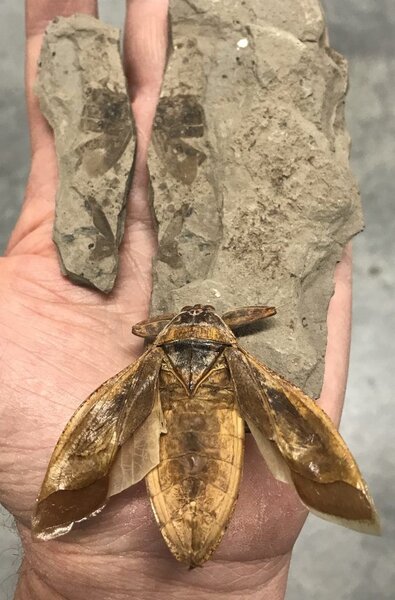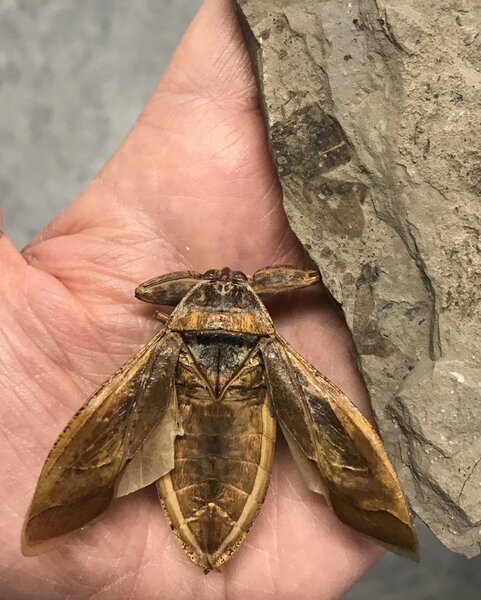Create a free profile to get unlimited access to exclusive videos, sweepstakes, and more!
Scientists are all abuzz over this rare prehistoric bug fossil found in Utah

We all know bugs are the true rulers of modern Earth, and with the biggest biomass of any terrestrial animal, there are nearly 1.4 billion bugs for every person on the planet! Insect fossils dating back to the Age of Dinosaurs are exceedingly rare, so when researchers unearthed a bug specimen out of the legendary Morrison Formation in Southern Utah, you better believe it elicited a rousing response.
A team of paleontologists based in Utah and Argentina has identified a 151-million-year-old insect fossil from the famous fossil-rich region of North America that first delivered the skeletons of well-known carnivores and herbivores like Apatosaurus, Allosaurus, Ceratosaurus, and Stegosaurus.
Officially named Morrisonnepa jurassica in a new study pubished in the online journal Historical Biology, the large fossillized insect is likely a menacing predator related to today's giant water bug, which are known to frequently munch on snails, tadpoles, and salamanders.
Morrisonnepa was categorized within the hemipteran insect group Nepomorpha (“true water bugs”) and seems to be a close cousin of the modern family Belostomatidae. Most 21st-century examples have a wicked stinging proboscis close to their mouth and can often be found hunting prey both from the air and underwater in ponds and creeks.
Co-author of the research paper, paleontologist John Foster of the Utah Field House of Natural History State Park Museum in Vernal, Utah, reveals that body fossil evidence of the insect fauna of the Late Jurassic in North America is sadly lacking.
“We always dreamed of finding actual insect fossils in the Morrison, but until the first report in 2011 there had been nothing,” Foster noted. “That report gave us hope, but still, when this specimen appeared under a microscope, mixed in with a bulk batch of unidentified plant fossil material, it was shocking to realize that we were looking at an insect abdomen and wing – and big ones. There are plenty of good plant fossils at this site, so if we luck out and can find more insects too, it’ll be the icing on the cake, as they say.”
Morrisonnepa was initially discovered back in November 2017 near a dig site in the Late Jurassic-age Morrison Formation in southeastern Utah.
This flying insect fossil represents the majority of its abdomen, two portions of the forewing, and what appears to be the head. It's just the second insect body fossil ever discovered from the Morrison Formation in the last 140, making it an exceptionally uncommon find due to bugs having chitin exoskeletons rather than mineralized bones.
“Most of the information on fossil insects in the United States comes from Carboniferous, Permian (Paleozoic Era), and Triassic (Mesozoic) strata,” lead study author paleoentomologist María Belén Lara of the Centro de Ecología Aplicada del Litoral in Argentina explained. “Therefore, this finding is of utmost importance for the country. Also, with this discovery, we can support that the true aquatic bugs of the Jurassic were morphologically similar to their modern counterparts.”
This impressive insect fossil is now housed in the paleontology collections at the Utah Field House of Natural History State Park Museum in Vernal, Utah, and the research crew hopes to head back to the site in the near future to track down additional insect specimens.




























